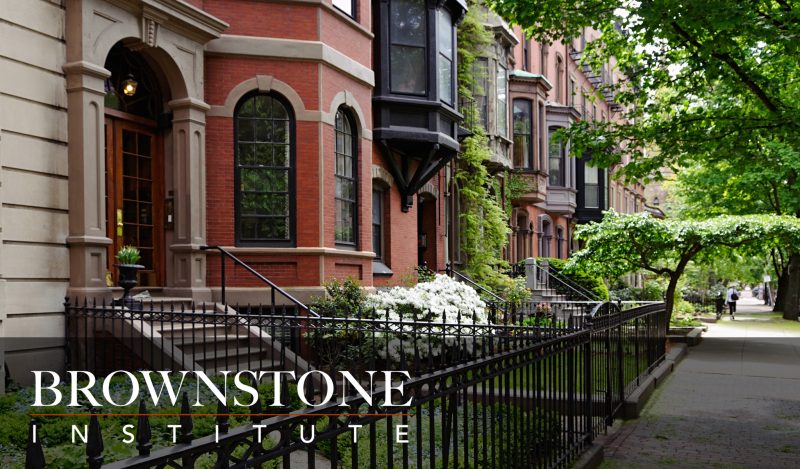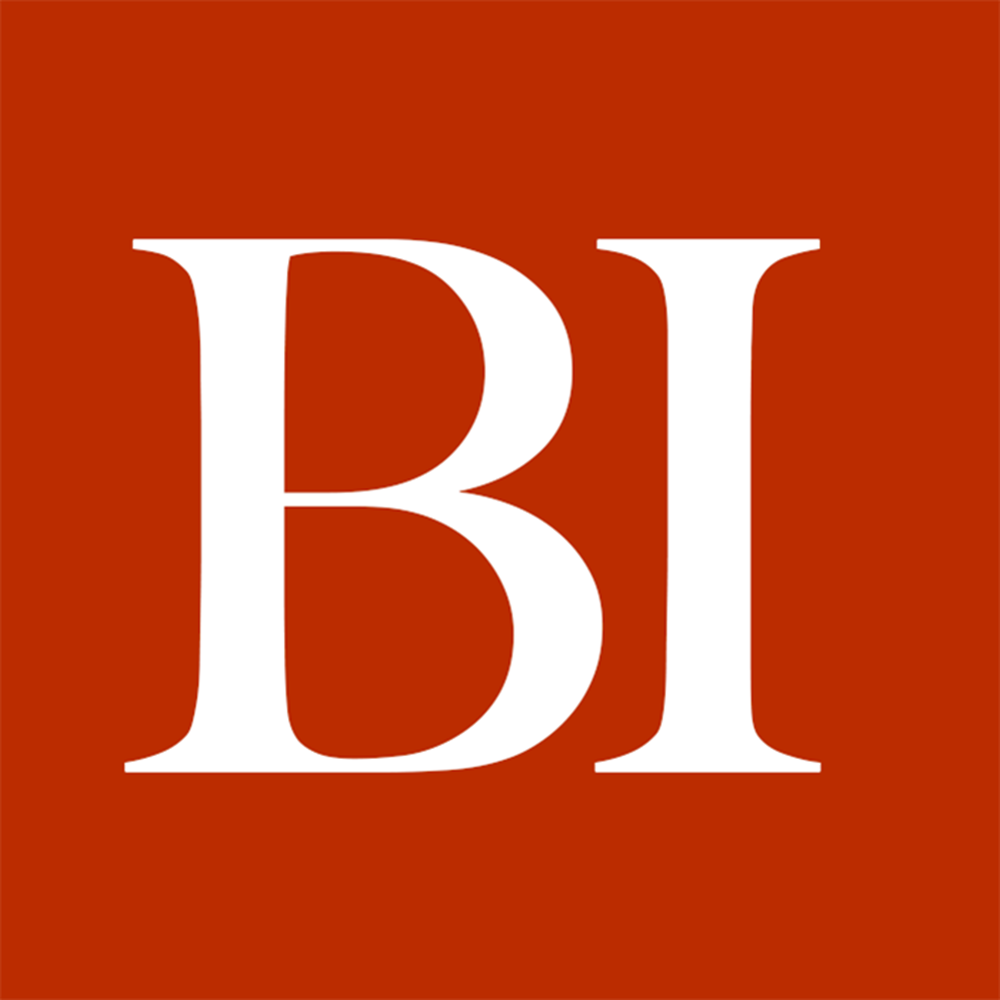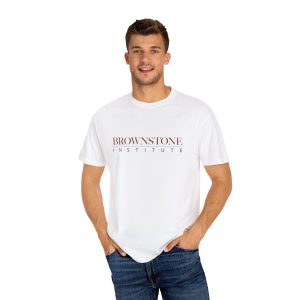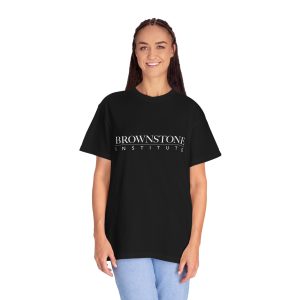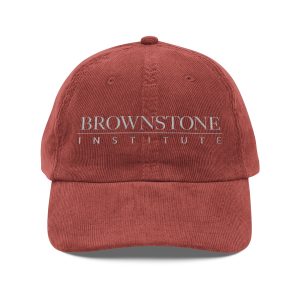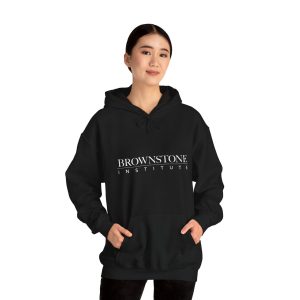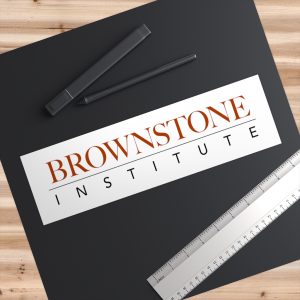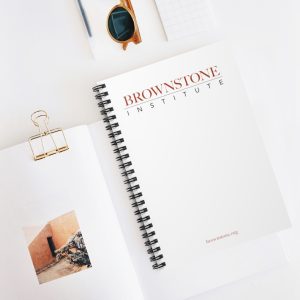The consequences of lockdowns were not limited to freedom of movement or assembly. Once leaders had the green light to shutter large swaths of society, they wielded that power to impose their newly established ideology.
A new creed emerged in 2020 that divided society into true believers and heretics. Its adherents donned face coverings and regularly engaged in emotional self-flagellation. They put their faith in pharmaceutical products and unrelentingly sought to convert their neighbors. Those who questioned their dogma were cast aside as irredeemable. Just as the New York Times suggested the country “go medieval” on the coronavirus, society returned to a Dark Age persecution of iconoclasts.
The central powers banished dissidents while the United States’ capital city declared a holiday for its beatified leader. In Washington, DC, the Mayor renamed Christmas Eve “Dr. Anthony S. Fauci Day” in 2020. Mass media and cultural madness ushered in the nascent faith. Rev. John Naugle later observed, “Lockdowns were the catechumenate, masks were the religious garb, vaccines were the initiation.”
The ruling class was not subtle on this point. New York Governor Kathy Hochul told constituents, “I need you to be my apostles,” urging them to spread her gospel on Covid vaccines. Lindsey Graham thanked the divine intervention of mRNA shots. Newspapers ran opinion pieces on why “Jesus would wear a mask.” Ibram X. Kendi proudly wrote in The Atlantic: “[My] dad likened me to John the Baptist, a voice crying out in the wilderness for racial data on the pandemic.” On The Late Show, Stephen Colbert parodied The Ten Commandments as a coronavirus warning to worship lockdowns. “Flatten the curve,” Colbert’s God told the audience. On Easter Sunday 2021, President Biden implored Americans to get the Covid vaccine, insisting it was their “moral obligation,” in a speech that did not mention Jesus once.
The Free Expulsion of Religion
Before March 2020, most Americans would think that monitoring church attendance, banning Easter services, and arresting hymn singers were practices reserved for Eastern-style totalitarianism. The Soviet Union persecuted Christians, and the Chinese have Muslim concentration camps, but Americans’ freedom of worship is enshrined in the Bill of Rights. The free exercise of religion precedes all other liberties in the First Amendment. Even in the 21st century, when the country had become increasingly secular, few could imagine that political leaders would launch a crusade against organized religion.
Yet, that’s exactly what happened. And the assault on religious liberty was not reserved for the piously nonreligious in Santa Barbara or East Hampton. In 2020, Kentucky State Police arrived at an Easter service to issue notices that attendance was criminal. They recorded the congregants’ license plate numbers and issued warnings that violators were subject to further sanction. In Mississippi, police issued citations to a church congregation that hosted a drive-in service despite attendees remaining in their vehicles for the entire service.
In Idaho, police arrested Christians for removing their masks to sing psalms outdoors in September 2020. “We were just singing songs,” said Christ Church Pastor Ben Zornes. But that was no excuse for the sin of violating an irrational and unscientific cloth commandment. “At some point in time you have to enforce,” the local police chief explained.
The city later reached a settlement that paid $300,000 to Iowans arrested for attending the outdoor service. “[The worshippers] should never have been arrested in the first place, and the constitutionality of what the City thought its Code said is irrelevant,” wrote the local district judge. The obviousness of that statement – worshippers should never have been arrested for singing outdoors – reveals the intensity of the secular fervor that swept the country.
Unsurprisingly, Andrew Cuomo was intolerant of citizens worshipping non-political deities.
He threatened upstate New Yorkers with $1,000 fines for attending “drive-in” services in May 2020. “We’re not trying to be rebellious,” said Pastor Samson Ryman. “We’re just trying to be safe and reach our community with the gospel of Jesus Christ in these difficult times when people are having anxiety, worry, different mental concerns, and they want to get some spiritual help, through the word of God.” On May 3, 2020, Ryman held his first drive-in service in upstate New York with 23 attendees in 18 vehicles. The next day, Cuomo’s police force issued a cease-and-desist letter.
In California, the Santa Clara Health Department used GPS data to monitor congregants at a local evangelical church. The government partnered with a data mining company to create a “geofence” (a digital boundary) around the church’s property, monitoring over 65,000 mobile devices to record any citizens that spent more than four minutes in the area.
Around the country, governors deemed churches “non-essential” and barred them from opening their doors. Meanwhile, marijuana dispensaries, liquor stores, abortionists, and lotteries received the protection of the arbitrary label of “essential services.” For most of 2020, Christians, Jews, and Muslims had no recourse against the totalitarian assault on their faith and First Amendment freedoms.
Caesars Palace, Calvary Chapel, and the Chief’s Cowardice
The orders that shuttered churches were not generally applicable ordinances. They were not blanket decrees that applied equally to all establishments. Instead, states adopted deliberately unequal systems of law: “essential” groups like Costco and casinos could host hundreds of customers at any given time while religious groups faced stringent restrictions or bans. The Supreme Court’s Covid docket demonstrated the disparate treatment that targeted churches nationwide.
Before March 2020, the Court’s First Amendment jurisprudence was clear: The Free Exercise Clause “protects religious observers against unequal treatment.” That includes both “the right to harbor religious beliefs inwardly and secretly” and the “performance of (or abstention from) physical acts.” But the Covid creed quickly overturned centuries of legal tradition.
Chief Justice John Roberts put the Free Exercise Clause on hiatus as leaders specifically targeted churches in their decrees. Eventually, a change in the makeup of the Court overturned the unconstitutional attacks on religious liberty.
The Court heard its first case challenging restrictions on religious attendance in May 2020. In South Bay v. Newsom, religious groups challenged California Governor Gavin Newsom’s executive order that limited church attendance to 25% capacity. They argued that “the fog-of-war” cannot excuse “violating fundamental constitutional rights” and “arbitrarily discriminating against places of worship in violation of their first to the Free Exercise of Religion under the First Amendment.”
The Court divided along familiar political lines: the liberal bloc of Justices Ginsburg, Breyer, Sotomayor, and Kagan voted to uphold deprivations of liberty as a valid exercise of states’ police power; Justice Gorsuch led conservatives Alito, Kavanaugh, and Thomas in challenging the irrationality of the edicts; Chief Justice Roberts sided with the leftists, abandoning religious freedom by deferring to public health experts.
“Unelected judiciary lacks the background, competence, and expertise to assess public health and is not accountable to the people,” the Chief wrote, upholding Newsom’s order. And with that, the Chief Justice placed political considerations above the law of the land, deferring to the public health apparatus as constitutional freedoms disappeared from American life. The case had not required him to render a medical opinion; all it required was a basic understanding of the Free Exercise Clause. But worse was yet to come.
In June, the nation erupted in riots in response to the death of George Floyd. Thousands gathered in the streets while cities upheld bans on religious worship. When asked about this double standard, New York City Mayor Bill de Blasio responded, “When you see a nation, an entire nation, simultaneously grappling with an extraordinary crisis seeded in 400 years of American racism, I’m sorry, that is not the same question as the understandably aggrieved store owner or devout religious person who wants to go back to services.”
In the Wall Street Journal, Abigail Shrier reacted to the double standards imposed on secular and religious gathering with her article “Politicians Shutter Churches and Synagogues, Then Tolerate Riots.” She argued:
“Perhaps that ‘devout religious person’ ought to choose a better hobby, one more meaningful to Mr. de Blasio…California recently issued an order to ease restrictions, setting a 25% occupancy cap on houses of worship but not on retail stores or other businesses—one set of rules for worshipers, another for everyone else. Perhaps most devastating, when petitioners challenged the order at the Supreme Court, the majority shrugged.”
The disparate treatment between religious and commercial activities soon became the focus of conservatives on the Supreme Court.
In July, the Court again split 5-4 in its opinion rejecting a Nevada church’s challenge to the State’s Covid restrictions. Governor Steve Sisolak limited religious gatherings to 50 people. The same order allowed commercial groups, including casinos, to host up to 500 customers. Again, Chief Justice Roberts provided the critical fifth vote in favor of upholding the restriction. Perhaps tellingly, no justice in the majority offered an opinion justifying their rationale.
Citizens quickly recognized how Sisolak’s order favored the state’s gaming industry over religious services. One local columnist asked, “if a Nevada church were to hold a bingo night in its 500-seat auditorium, under Gov. Steve Sisolak’s diktat, 250 people could attend?”
Chief Justice Roberts and the liberal bloc did not offer any explanation for how the 50-person limit could be justified when thousands of protestors gathered the week before, rioting, throwing rocks at officers, and shooting a federal marshal in the head to oppose systemic racism. Politically favored groups like Black Lives Matter had no restrictions while church doors remained subject to the capricious whims of “public health” initiatives.
Justice Gorsuch issued a one-paragraph dissent criticizing the irrationality of the orders. “Under the Governor’s edict, a 10-screen ‘multiplex’ may host 500 moviegoers at any time. A casino, too, may cater to hundreds at once, with perhaps six people huddled at each craps table here and a similar number gathered around every roulette wheel there,” he wrote. But the governor’s order imposed a 50-worshiper limit for religious gatherings, no matter the buildings’ capacities. “The First Amendment prohibits such obvious discrimination against the exercise of religion,” Gorsuch wrote. “There is no world in which the Constitution permits Nevada to favor Caesars Palace over Calvary Chapel.”
Justice Kavanaugh issued a similar dissent, writing: “A State may not impose strict limits on places of worship and looser limits on restaurants, bars, casinos, and gyms, at least without sufficient justification for the differential treatment of religion.” The state’s largest paper – the Las Vegas Review-Journal – noted the majority’s failure to explain its decision. “The silence from the majority is significant. These issues aren’t going away, and the court will sooner or later have to confront them.”
Though Gorsuch had the law and logic on his side, Chief Justice Roberts’s deference to the public health apparatus continued the Supreme Court’s abandonment of religious liberty. As the Review-Journal predicted, the issue continued through the year. Following Justice Ginsburg’s death in September 2020, however, the liberal wing could no longer silently uphold tyranny.
In October, Amy Coney Barrett joined the Court and reversed the justices’ 5-4 split. One month later, the Court overturned Governor Cuomo’s executive order that limited attendance at religious services to 10 people.
Now in the majority, Gorsuch liberated congregants from the tyranny of Cuomo’s edicts. He again compared restrictions on secular activities and religious gatherings; “according to the Governor, it may be unsafe to go to church, but it is always fine to pick up another bottle of wine, shop for a new bike, or spend the afternoon exploring your distal points and meridians…Who knew public health would so perfectly align with secular convenience?”
Chief Justice Roberts voted in dissent, though he offered no opinion to justify his view.
In February 2021, California religious organizations again challenged Governor Newsom’s Covid restrictions. Newsom had outlawed indoor worship in certain areas and banned singing. Chief Justice Roberts, joined by Kavanaugh and Barrett, upheld the ban on singing but overturned the capacity limits.
Gorsuch wrote a separate opinion, joined by Thomas and Alito, that continued his critiques as Covid entered its second year. He wrote, “Government actors have been moving the goalposts on pandemic-related sacrifices for months, adopting new benchmarks that always seem to put restoration of liberty just around the corner.”
Like his opinions in New York and Nevada, he focused on disparate treatment and political favoritism; “If Hollywood may host a studio audience or film a singing competition while not a single soul may enter California’s churches, synagogues, and mosques, something has gone seriously awry.”
In May 2023, Justice Gorsuch wrote that the responses to Covid may have been “the greatest intrusions on civil liberties in the peacetime history of this country.” The laptop class of the New York Times editorial pages responded with scorn, calling Gorsuch’s opinion “a shocking worldview but not, in the end, a surprising one.”
Notably, the Times writers made no effort to deny the Covid responses’ vast intrusions on civil liberties. Instead, they argued that American history was based in repression and subjugation, so Gorsuch had no basis for chastising the medical police state of 2020. “Gorsuch’s denunciation of pandemic restrictions acts as an inadvertent glimpse into his view of the United States,” wrote opinion columnist Jamelle Bouie. “He is willing to ignore or doesn’t even see our long, peacetime history of repression and internal tyranny.”
Other people have been bad too does not make for an effective legal argument, but no logic or facts could defend the Covid regime. States shuttered churches while offering politically favored groups special privileges. Congregants lost their right to worship and their access to spiritual outlets in times of despair and uncertainty. Across the country, police arrested Americans for attending funerals. Loneliness, suicide, and substance abuse skyrocketed. Citizens remained free to stand next to their neighbors at the liquor store or the blackjack table, so long as they didn’t attend worship beforehand. The elderly were left without comfort in their final days. Catholics missed their last rites; at other times, they were forced to hear them through an iPhone speaker. Governors and mayors banned the celebration of holidays. They criminalized the communal nature of religious gatherings.
“An American mayor criminalized the communal celebration of Easter,” wrote U.S. District Justin Walker after Louisville’s prohibition of holiday drive-in services. “That sentence is one that this court never expected to see outside the pages of a dystopian novel, or perhaps the pages of The Onion.” Yet that dystopia became reality across the country. Religious groups became the target of authoritarian crusades.
“Plague on a Biblical Scale”
New York City Bill de Blasio was particularly proud of his stand against religious freedom during the pandemic. In April 2020, a Jewish community in Brooklyn held a funeral for a local rabbi. Masked mourners walked with the coffin through the streets. Their leaders announced social distancing precautions, but their efforts were insufficient for their self-annointed dictator.
The six-foot, five-inch de Blasio led hundreds of police officers into Brooklyn to take on crowds of unarmed Orthodox Jews. “Something absolutely unacceptable happened in Williamsburg tonite: a large funeral gathering in the middle of this pandemic,” the mayor posted. “When I heard, I went there myself to ensure the crowd was dispersed. And what I saw WILL NOT be tolerated so long as we are fighting the Coronavirus.”
De Blasio and hundreds of masked policemen stopped the funeral, setting up a battle between religious liberty and the mayor’s unscientific edicts. “My message to the Jewish community, and all communities, is this simple: the time for warnings has passed,” de Blasio later posted. “This is about stopping this disease and saving lives. Period.”
The media encouraged the mayor’s crusade. The New York Times warned that Covid threatened a “Plague on a Biblical Scale” to Hasidic communities. Notably, de Blasio and the Times did not issue similar warnings when thousands of BLM supporters stormed through New York, looting stores, destroying police cars, and assaulting officers.
As the New York Times explained on June 2, 2020:
“The looters tore off the plywood that boarded up Macy’s flagship store in Herald Square, swarming by the dozens inside to steal whatever they could find before being chased down by the police. Others smashed the windows at a Nike store, grabbing shirts, jeans and zip-up jackets. They crashed into a Coach store, ransacked a Bergdorf Goodman branch and destroyed scores of smaller storefronts along the way.”
But the “time for warnings” had not passed for Black Lives Matter. De Blasio did not personally escort his police force to the scene to quash the urban anarchy. He did not describe the vandalism, crime, and demonic mobs as “absolutely unacceptable.” That treatment was reserved for peaceful religious gatherings. As the mayor explained, activists using racism as an excuse to unravel society was “not the same question” as a “devout religious person” attending service.
Instead, de Blasio deliberately held back policemen during the riots to avoid potential backlash from his left-wing supporters. “As a result, knowing they were outnumbered, officers were unwilling to take on the looters,” claimed Governor Cuomo’s top aide, Melissa DeRosa.
After Chief Justice Roberts suspended the First Amendment in May 2020, the assault on religious liberty continued through the summer. Governor Cuomo specifically targeted Jewish gatherings in an October 2020 press conference. “Orthodox Jewish gatherings often are very, very large, and we’ve seen what one person can do in a group,” he complained. He chastised them for hosting outdoor meetings that violated his social distancing directives.
Brooklyn Jews protested in response, though they refrained from looting local Nike and Macy’s stores for sneakers and designer jeans. “We are not going to be deprived of the right that we have in America, like everybody else in America, the right to observe our religion,” City Councilman Kalman Yeger told a crowd.
Weeks later, Justice Barrett joined the Court and restored that right to New Yorkers. Despite the Jewish community’s ongoing Covid transgressions, the plague of a Biblical scale never arrived. As of 2025, de Blasio and Cuomo remain unrepentant.
The restrictions were not just bad public policy; they overturned the First Amendment’s Free Exercise Clause. Governors and police forces criminalized worship and targeted religious gatherings. They used the threat of force and the country’s largest police department to crack down on worship.
A secular fervor overtook the country in 2020. The rule of law gave way to the panic of fear. Governors and mayors embraced their new power to control their citizens. The Chief Justice invented a pandemic exception to the First Amendment, enabling the assaults on worship as Americans lost their most precious liberties. The lockdowns featured deliberate and targeted attacks on religious freedoms while offering brazenly irrational exceptions to political allies and commercial enterprises. Shuttering churches had no relation to viral spread of the disease; it was a loyalty test designed to replace worship of the eternal with devotion to the political.
Join the conversation:


Published under a Creative Commons Attribution 4.0 International License
For reprints, please set the canonical link back to the original Brownstone Institute Article and Author.
